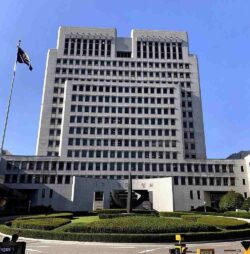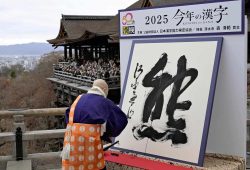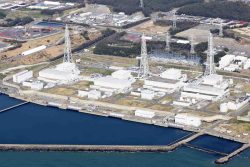20:52 JST, April 5, 2024
On Sept. 29, 2023, White House national security adviser Jake Sullivan said, “[t]he Middle East region is quieter today than it has been in two decades.”
Just eight days later, the Islamic militant group Hamas launched a surprise attack on Israel. Sullivan’s remark showed that policymakers for U.S. security had been unaware of any signs of the impending assault. Indeed, on Sept.18, the U.S. government agreed to unfreeze $6 billion in Iranian funds in exchange for the release of five Americans held in Iranian prisons. Washington thus conceded to Iran, the most prominent supporter of Hamas, at the worst possible time. These incidents are proof that there is no long-term vision for U.S. policy toward Iran.
The most significant cause of the failure to thwart the Oct. 7 rampage was an intelligence fiasco on the part of the United States and Israel. Hamas had managed to build up large military arsenals in the Gaza Strip without being detected by Israel.
We can deduce two things. First, Hamas went to great lengths to avoid information and communication technology across the board to keep Israel from detecting activity in its chain of command and clandestine contact among its members. Second, Hamas kept weaponry and armories hidden from imagery intelligence (IMINT) analysis based on data from surveillance satellites, Global Hawks uncrewed reconnaissance planes, and others. To do so, the group hid the stashes underground before the offensive and relocated them immediately after.
There were many warnings within Israel about a possible Hamas attack, but they went unheeded. An Israeli volunteer team specializing in tracking communications in Gaza alerted the relevant Israeli authorities to war preparations by Hamas. A former Israeli intelligence officer also conveyed similar warnings. But all of their warnings were ignored by Israel’s intelligence authorities. Even border surveillance soldiers pointed out the possibility of Hamas blowing up the Gaza-Israel border and occupying Israeli territory.
In December, The New York Times unveiled that Israel had obtained a Hamas battle plan, dubbed “Jericho Wall,” more than a year before the devastating assault. The plan reportedly called for a barrage of rocket attacks, a flurry of drone launches, and volleys of gunfire. However, Israeli intelligence officials determined that the planned attack would be beyond Hamas’ warfare capabilities.
In its initial reaction to what happened on Oct. 7, Israel’s Shin Bet domestic intelligence agency thought Hamas was conducting a nighttime military exercise, as it believed that the militant group would not benefit from fighting the Israeli military. A year before the offensive, Unit 8200, part of the Israeli signal intelligence (SIGINT) agency, stopped eavesdropping on Hamas’ hand-held radios in Gaza because it felt the operation was “a waste of effort.” These judgments resulted from inattention and overconfidence, which are taboo throughout the global intelligence community. John Brennan, a former director of the U.S. Central Intelligence Agency who used to be a colleague of mine, told the NBC News program on Dec. 2 that Israel’s intelligence assessment of Hamas’ capabilities was “static” and that the evaluation stemmed from optimistic thinking.
Underground quagmire
Israeli troops have suffered from Hamas’ thorough utilization of underground infrastructure. GPS-enabled surveillance and ground combat technology have been useless, making it impossible for Israel to take advantage of its technological superiority over Hamas.
The vast network of tunnels in Gaza has not only been for hiding armaments, fighters, and command posts. It is also highly sophisticated, with medical facilities installed within it.
We may perceive the Gaza Strip as a narrow but densely populated territory with about 2.2 million residents. But it is surprisingly vast — its total area is about 365 square kilometers, nearly six times the inner area of Tokyo’s Yamanote railway line and three times the size of Paris.
Israeli officials estimate the total length of the tunnels that Hamas has built underneath Gaza at about 560 to 720 kilometers. That is longer than the 290-kilometer-long cable tunnels Nippon Telegraph and Telephone East Corp. (NTT East) uses within Tokyo and the 515-kilometer Tokaido Shinkansen line between Tokyo and Shin-Osaka.
Let’s compare the Israel-Hamas war in Gaza with the 1945 Battle of Iwo Jima, well-known for its underground trenches. The area of the island, now officially called Iwoto, is 20 square kilometers, about one-sixteenth the size of Gaza. When U.S. Marines began invading the island on Feb. 19, 1945, Japanese troops built tunnels with a total length of 18 kilometers, just one-thirtieth to one-fortieth the size of Gaza’s tunnel system. Nonetheless, it took the U.S. forces more than a month to finally prevail, leaving about 28,000 Americans killed or injured.
When U.S. forces fought Iraqi insurgents and the Mujahideen (warriors of Islam) in Fallujah, Iraq, they were at a disadvantage as they encountered numerous underground defenses and fortified trenches. Though there was no extensive network of underground tunnels like that in Gaza, the battle of Fallujah is said to be one of the most harrowing campaigns in U.S. military history.
The difficulty of waging underground battles has a lot to do with the security of Japan because North Korea has been building large-scale underground facilities in Pyongyang.
In 2015, a South Korean newspaper revealed that the U.S. and South Korean forces had agreed on a new joint military operational plan, code-named “OPLAN 5015,” to repel a North Korean invasion of the South. According to the report, the plan incorporated a 21st-century approach to warfare, deploying special operations forces and precision strike weapons. The plan seemingly focused on so-called surgical attacks on specific priority targets in the North, such as nuclear and missile facilities, and a special forces assassination mission.
However, when tensions on the Korean Peninsula became so high in November 2017 that the United States deployed three aircraft carriers to the Sea of Japan, the OPLAN 5015 was not implemented. The extensive underground facilities in Pyongyang were one reason why. U.S. military leaders are, therefore, believed to be fully aware that seizing complete control of Gaza is far from easy.
To weaken Hamas’ underground infrastructure, Israel will have to conduct large-scale aerial, ground, and underground operations in Gaza over an extended period. It is difficult to destroy the Hamas facilities — such an operation would never be possible without massive human casualties.
Some people are speaking of the possibility that Iran, which supports Hamas, will eventually enter the Gaza war on behalf of the Palestinian militant group. But the likelihood of Iran’s involvement appears to be low, as Tehran can intervene both politically and militarily in the Hamas-Israel conflict through its proxy militant groups instead of getting its own hands dirty. We can conclude that the Oct. 7 attack has boosted Iran’s influence in the region.
Iran has formed the so-called Shiite Crescent by exercising its influence — through the Islamic Revolutionary Guard Corps-Quds Force, among others — on Lebanon’s Hezbollah, Yemen’s Houthis, Syria’s Shiite militias, Iraq’s Badr Organization and Kataib Hezbollah, and others.
Memories are still fresh of how Gen. Qassem Soleimani, commander of the Quds Force, actively worked to strengthen and expand Iran’s influence across the Middle East until his killing in a U.S. drone strike on Jan. 3, 2020.
On Jan. 28 this year, three U.S. soldiers were killed in a drone attack on a U.S. military outpost in Jordan. In retaliation, the U.S. military launched air strikes on dozens of sites in Iraq and Syria used by Iran-linked militant groups.
However, Iran has not fought back against the United States. Shortly after the U.S. retaliation, Tehran issued a statement warning that Washington was risking an escalation of warfare and hostilities in the region. The Iranian reaction differed from its past criticism of the United States. Iran may benefit if it maintains the status quo rather than provoke the United States.
(Special to The Yomiuri Shimbun)
Shigeru Kitamura joined the National Police Agency in 1980 after graduating from the University of Tokyo. He became director of Cabinet Intelligence in 2011 and served as secretary general of the National Security Secretariat from September 2019 to July 2021.

Shigeru Kitamura
Shigeru Kitamura joined the National Police Agency in 1980 after graduating from the University of Tokyo. He became director of Cabinet Intelligence in 2011 and served as secretary general of the National Security Secretariat from September 2019 to July 2021.
The original article in Japanese appeared in the March 31 issue of The Yomiuri Shimbun.
"Editorial & Columns" POPULAR ARTICLE
-

Violations of Subcontract Law: Major Automakers Must Eliminate Old Practices
-

Local Governments’ Tax Revenues: Devise Ways to Correct Imbalances in Tax Sources
-

Heavy Rains in Asia: Support for Victims, Flood-Control Measures Urgently Needed
-

5 Japanese Business Dinner Mistakes to Avoid — and What They Taught Me About Business in Japan
-

New Nuclear Threat: China Seeking to Follow U.S., Russia in Military Expansion
JN ACCESS RANKING
-

Japan’s Hopes for Seafood Exports Shot Down in China Spat
-

Keidanren Chairman Yoshinobu Tsutsui Visits Kashiwazaki-Kariwa Nuclear Power Plant; Inspects New Emergency Safety System
-

Japan to Charge Foreigners More for Residence Permits, Looking to Align with Western Countries
-

Imports of Rare Earths from China Facing Delays, May Be Caused by Deterioration of Japan-China Relations
-

Japan Exports Rise in October as Slump in U.S. Sales Eases
























